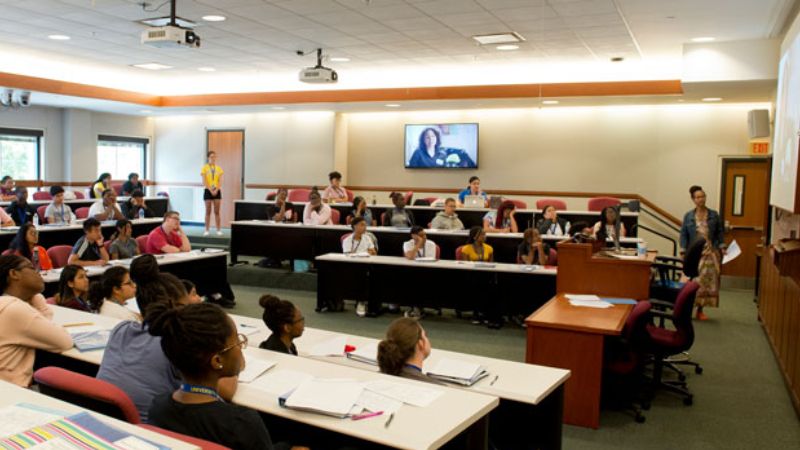With a few days to go before Gov. John Carney decides on public school reopening for the 2020-21 school year, as of now he says he is leaning toward hybrid learning.
Carney and Division of Public Health officials are using three metrics to determine how to reopen public schools: new COVID-19 cases per 100,000 people, number of hospitalizations, and percent of persons testing positive over the total number of people who have been tested. Each metric is color-coded, with green a go for in-school learning, yellow for hybrid that combines in-school and online learning, and red for online and virtual learning only.
“We will make a determination based on these criteria a week from now, so we're getting a little bit closer to the opening of the schools to evaluate whether we're recommending reopening in red, yellow or green,” he said during his July 28 press conference. “If I had to predicate, we'd be in yellow a week from now, but we will make that judgement then.”
Rick Hong, DPH medical director, said officials are using three metrics to determine school reopening because using only one metric would not accurately show how COVID-19 is affecting the state.
As schools prepare to reopen, he said, all must assume they will have positive COVID-19 cases and a have a plan for when it happens. “For us to assume no school will have any cases is not necessarily a realistic approach,” he said.
But if schools do reopen and there is a positive case, Hong said, it is unlikely the entire school would need to be closed as long as it has followed infection-control measures such as using face coverings, washing hands, and social distancing.
He provided several scenarios of what schools can do if someone in the school tests positive, and said there is no one-size-fits-all solution.
For example, Hong said, if a teacher tests COVID-19 positive, but has worn a face covering and was not closer than 6 feet from anyone for more than 15 consecutive minutes, then quarantining the class or anyone else would not be necessary.
In another example, Hong said, if a student wears a face covering but comes into contact with another student not wearing a face mask and is closer than 6 feet to them for more than 15 minutes, the student wearing a face mask would not have to be quarantined, even if the other student tests COVID-19 positive. “If a face covering was used consistently, even though that child was within 6 feet of another child, the student next to the positive case would not need to quarantine,” he said.
Carney said COVID-19 data changes on a weekly basis, but could improve if people take precautions and don't become complacent. Delaware's latest statistics for July 28 show 68 hospitalizations for COVID-19 with 15 critical. The average percent of persons testing positive has held at 4.3 percent or lower since July 16, but the rate of new cases is about 71 per 100,000 – a rate that has landed Delaware on quarantine lists for New Jersey, New York, Connecticut and now Washington, D.C.
“We've been in this interim period for some weeks now. Not as good as we want to be and not as bad as some of the other states,” Carney said.
Delaware added to D.C. quarantine list
Delaware was added to a Washington, D.C. quarantine list July 27, requiring all people traveling from Delaware and other states to quarantine there for 14 days. Delaware has already been on the New Jersey, New York and Connecticut quarantine lists since July 21, after a brief removal for a few days.
Those states and Washington, D.C., consider states high risk if their seven-day moving average of daily new COVID-19 cases is 10 or more per 100,000 persons.
Carney said Delaware's high numbers have been driven by young people going out in the beach community.
“Let's fix that by leaning in to protective measures,” he said.
Melissa Steele is a staff writer covering the state Legislature, government and police. Her newspaper career spans more than 30 years and includes working for the Delaware State News, Burlington County Times, The News Journal, Dover Post and Milford Beacon before coming to the Cape Gazette in 2012. Her work has received numerous awards, most notably a Pulitzer Prize-adjudicated investigative piece, and a runner-up for the MDDC James S. Keat Freedom of Information Award.
























































